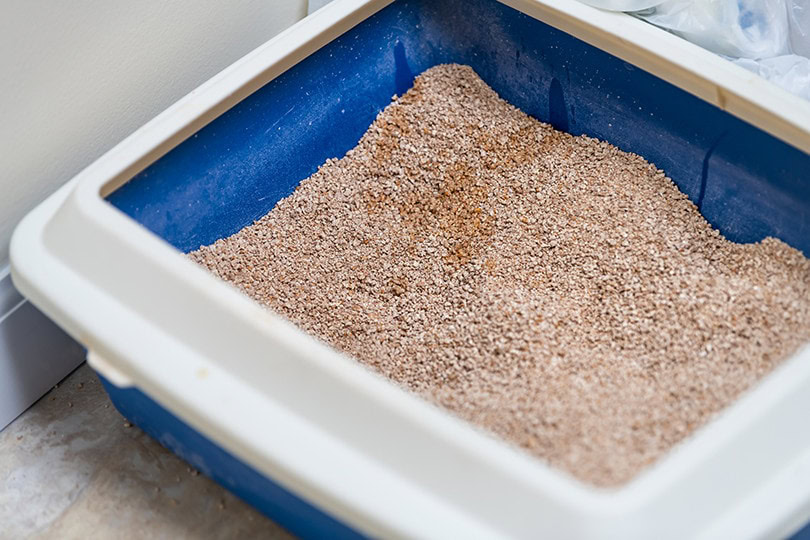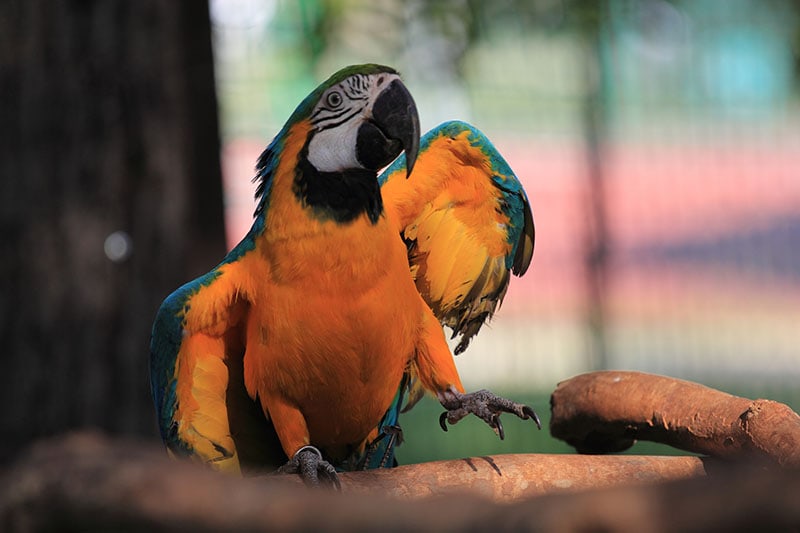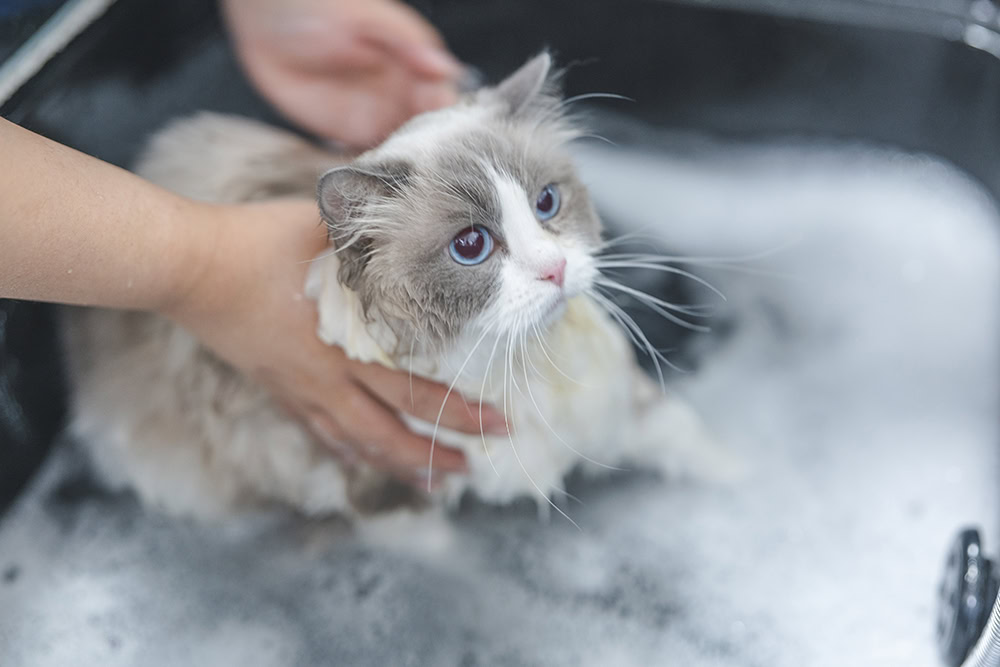VET APPROVED

The information is current and up-to-date in accordance with the latest veterinarian research.
Learn more »Click to Skip Ahead
Many people look for cat litter alternatives for a variety of reasons. Some wish to save money while others want to know what substitutes are available in case they can’t get cat litter or they run out of it.
If you’re looking for some cat litter substitutes, we’re here to help! Below are some interesting and even clever alternatives to cat litter you may never have thought of on your own.

The 10 Alternatives to Cat Litter
1. Newspapers and Junk Mail
Instead of letting your old newspapers and junk mail pile up before taking them to the recycling center, you can use them to make some cat litter. All you need to do is shred some paper, place it in the litter box, then mix it with some water and dish soap in order to remove the ink, which could be harmful in some cases.
After letting the paper, water, and dish soap sit for a few minutes, drain the mixture to rinse off the dish soap. Then sprinkle a liberal amount of baking soda on the mixture and take it out in the sun to dry. Once it becomes dry and crumbly, it’s done.
Making this type of litter is much easier and faster if you use a paper shredder, plus the litter looks more uniform this way. Otherwise, you can shred the paper using your hands or a pair of scissors.

2. Wood Shavings
If you do any woodworking at home or know someone who does, collect all the leftover wood shavings to use as litter. Otherwise, you can get wood shavings for cheap or even free from a lumber company, but avoid cedar and pine. Once you have some shavings of wood, simply add them to your litter box at a depth of about 3 inches.
An advantage of using wood shavings is that the natural smell of the wood will help mask the strong ammonia smell caused by cat urine.
3. Sawdust
Like wood shavings, you can collect sawdust from your own woodworking space or get it from a lumber company or even a factory that makes wood furniture. The best sawdust to use is that with a coarse, rather than dusty, consistency.
A word of caution about using sawdust as cat litter. According to the experts at Cancer.org, sawdust is a known human carcinogen, which means it may be harmful to cats as well, although that’s never been proven. Besides that, sawdust is not ideal for cats suffering from respiratory issues such as asthma.
To play it safe, if you have a choice between wood shavings and sawdust, choose the shavings. This way, you’ll be given the peace of mind knowing you’re not putting your cat at risk by making your own cat litter.
4. Wood Pellets Used for Home Heating
Nowadays, many homeowners are heating their homes using wood pellets. These pellets are made from ground-up wood, and they’re soft and lightweight. They make a good substitute for cat litter, and they’re easy to find at home improvement and hardware stores.
A big advantage to using pellets is that they’re very absorbent and have a natural smell, so they’ll soak up your cat’s urine and mask its unpleasant smell. Just be sure you use pellets that have not been treated with any chemicals.
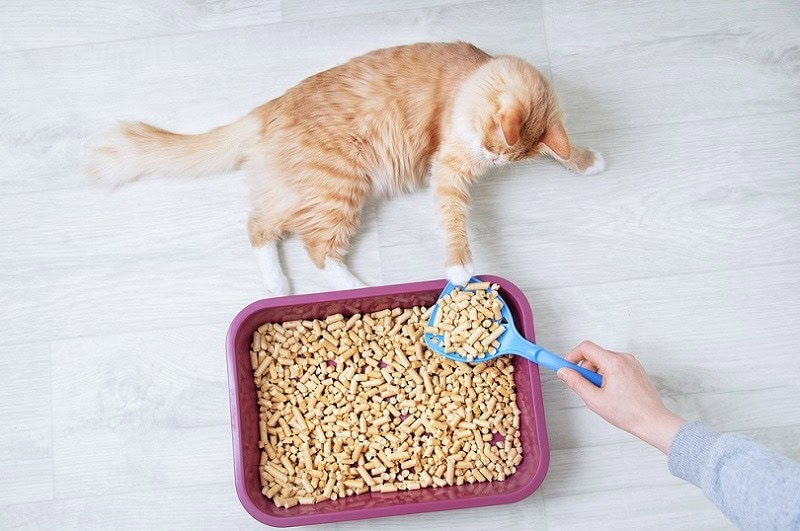
5. Sand
Sand can make a great cat litter, even though it can be messy. You can buy sand at hardware stores that is sold for use in children’s sandboxes. You can also buy big bags of sand at landscaping stores. If you want to use sand, put some in your litter box and see what your kitty thinks.
To keep the mess at bay, use a rubber mat under your litter box that makes clean-up easier. If you don’t have a rubber mat, you can use cardboard or any other flat material that can be either thrown away or washed periodically.
6. Small Animal Bedding
A good alternative to cat litter that’s easy to find is small animal bedding. This type of bedding is often made of things like all-natural aspen shavings that are specially processed to do away with dust and wood debris.
Small animal bedding is very absorbent and will do an excellent job at eliminating the foul smell of cat urine and feces. When shopping for bedding, look for a brand that’s free of chemicals and artificial coloring to ensure it’s safe for your cat to use.
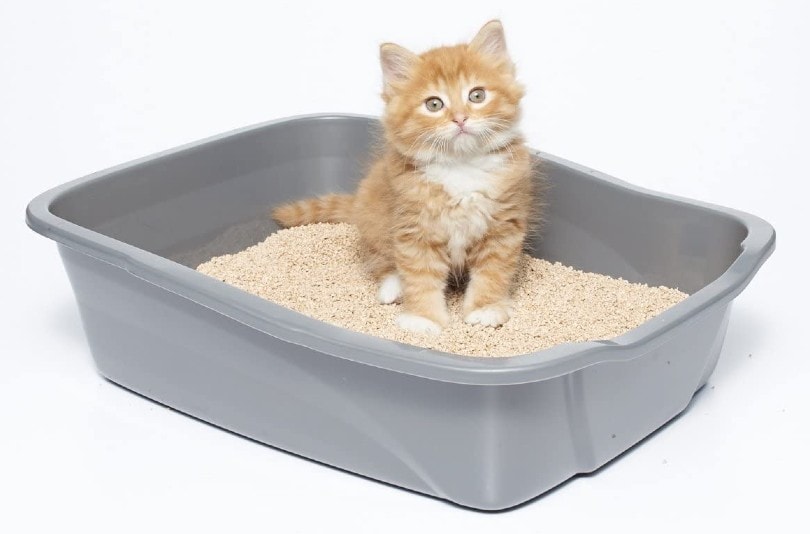
7. Poultry Feed
Perhaps the most interesting cat litter substitute, poultry feed is an effective and inexpensive product that absorbs well, making it a viable option for your litter box. Poultry feed that comes in pellet form looks a lot like cat litter pellets.
You can find poultry feed at farm animal supply stores, sold in bulk to save you a considerable amount of money. One drawback to using poultry feed is that it can attract insects and mice since it’s made of things like wheat, peas, milo, flaxseed, and alfalfa.
8. Potting Soil
It’s no secret that outdoor cats will head to the nearest garden to do their business because they like to relieve themselves in soil. You can use regular potting soil as an alternative to cat litter for your indoor cat.
Of course, potting soil used as litter can get messy, and your cat can track the soil all over your home. This option is best if your litter box is placed on the porch or in the laundry room, so you can keep your home free of soil.
You can get great deals on bulk potting soil at garden stores, so keep your eye out for sales if this is the way you want to go. Just be prepared to clean up after your cat uses the litter box because soil can be very messy to use as litter!
9. Housetraining Pads for Puppies
Many dog owners use disposable puppy pads to housebreak young puppies. While these pads are made for dogs, they can work for cats too, and especially young cats and those that are still learning how to use the litter box.
Simply place a pad or two on the floor and encourage your cat to do their business there, if that’s something that works for you. Once your cat uses the pad, give them lots of praise. You should also work on training your cat to leave the pads alone so they know they’re not toys or something fun to drag around the house.
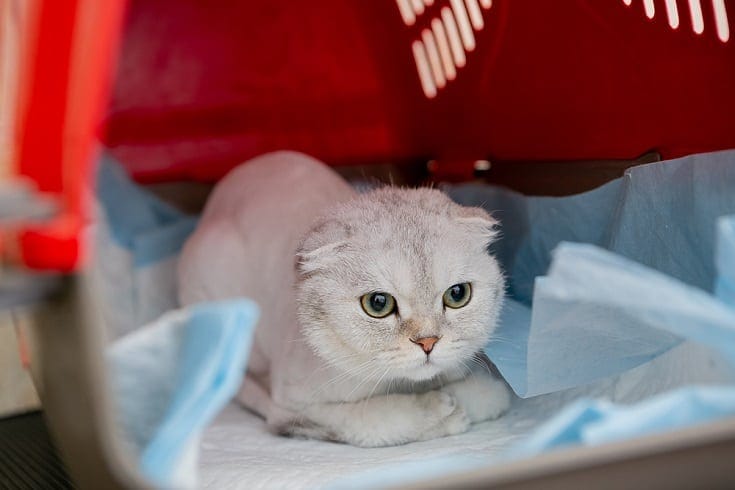
10. A Human Toilet
Believe it or not, a cat can be trained to use a human toilet with some patience and a little bit of luck! Cat toilet training has become so popular that you can now find cat toilet training kits for sale that make the whole process much easier. Although this sounds like a great option, there is an important environmental reason not to implement it. However, let’s first explain a bit more about the principle itself.
A cat toilet training kit typically consists of a series of toilet-shaped trays and flushable cat litter. You simply start with the first tray, place it on the rim of the toilet under the seat, and fill it with the litter. Then you must show your cat the new litter that’s on the toilet and encourage them to do their business there.
Once you’ve taught your cat to use the first tray, you move on to the next in the series that sits lower in the toilet, and so on until you get to the last tray that sits deeply in the toilet bowl. But first, consider a crucial environmental reason not to go down this route in the first place.
There is an important consideration when it comes to flushing cat feces down the toilet, and that is Toxoplasmosis. A parasitic infestation often carried by cats is putting marine mammals at significant health risk. Marine mammal conservationists warn against flushing cat feces and litter for this reason.
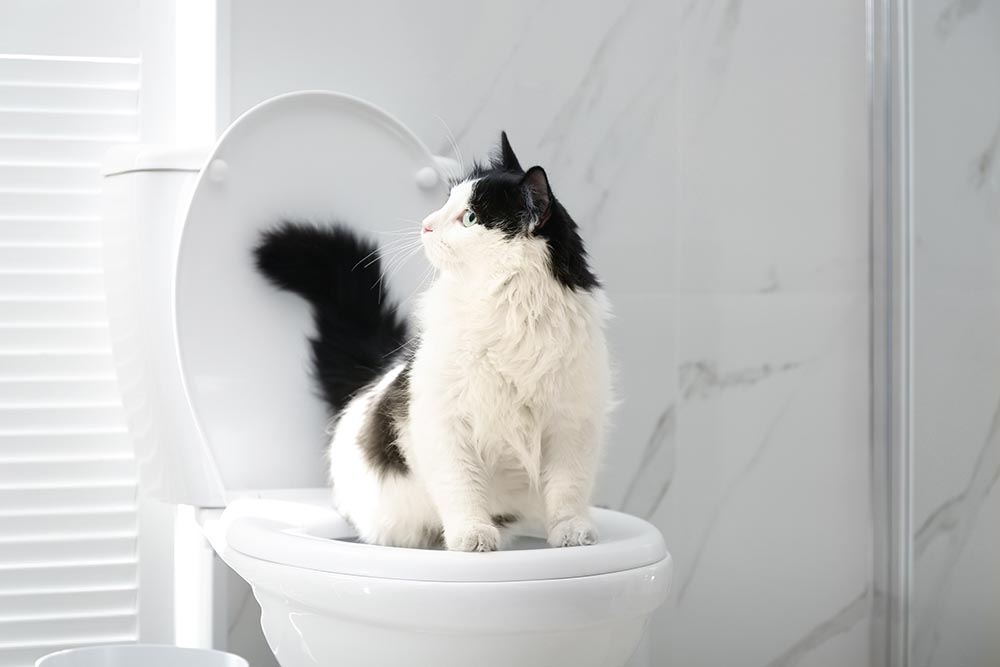

Introducing New Litter to Your Cat
You know that cats often require a gradual introduction to changes. A sudden change in their litter may tick your cat off, wherein they may refuse to use the litter box. A good way to avoid this problem is to slowly introduce the new litter to your feline friend.
Start by adding a bit of the litter alternative to your usual cat litter. This way, your cat is more likely to accept the new litter later on. Gradually decrease how much regular litter you put in the box until you’ve completely switched over to the litter substitute.
No matter what kind of litter you use, bad smells often linger. That's where an effective litter additive like Hepper's Advanced Bio-Enzyme Cat Litter Deodorizer can make a big difference.
- Bio Enzymatic Cat Litter Freshener - Smart formulation uses natural ingredients eliminating cat...
- Save Money - Stuff for cats isn’t the cheapest. With this litter box odor eliminator, you’ll...
- Every Litter, Every Surface - Are you afraid this additive won’t work on your litter? Fear not!...
This biodegradable deodorizer is fragrance-free and safe for all ages of cats and types of litter. It uses bio-enzymes to naturally get rid of odors and help your litter last longer.
At PangoVet, we've admired Hepper for many years, and decided to take a controlling ownership interest so that we could benefit from the outstanding designs of this cool company!

Summary
Whether you want to find a cheaper alternative to cat litter, your cat finds the conventional litter too dusty, or they simply don’t like the litter you use, there are many clever alternatives out there. We suggest starting with the first cat litter alternative on the list above and work your way down until you find the perfect solution for you and your beloved cat.
You may also be interested in:
Featured Image Credit: Andriy Blokhin, Shutterstock
